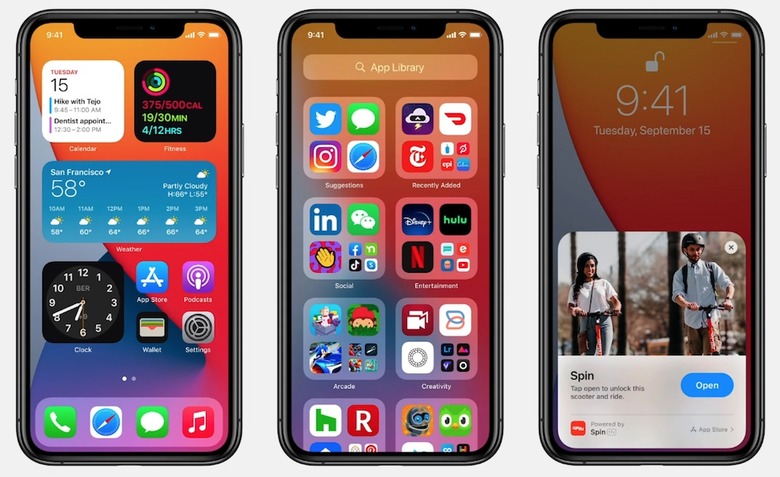Apple To Release iOS 14, iPadOS 14, watchOS 7, And tvOS 14 Tomorrow
- Apple today unveiled a slew of new hardware, including a new Apple Watch and revamped iPads.
- Apple also announced that it will release iOS 14, iPadOS 14, watchOS 7, and tvOS 14 tomorrow.
While Apple typically holds a large media event in September to introduce new iPhones, the coronavirus had other plans. Due to design and testing delays resulting from the coronavirus pandemic, Apple will reportedly unveil its next-gen iPhone lineup at a special event slated to take place in October. But seeing as how Apple's product line now extends far beyond the iPhone, Apple held a separate event today where it introduced a brand new Apple Watch Series 6, a more affordable Apple Watch SE, an Apple One subscription service, and refreshed iPads.
Beyond those product unveilings, Apple also took some time at the end of the event to quickly note that iOS 14, iPadOS 14, watchOS 7, and tvOS 14 will be released tomorrow. Apple notably didn't make any mention of upcoming iPhones.
The impending release of iOS 14 is clearly the most intriguing update of all as the update will introduce a slew of new features. As Apple initially detailed at WWDC earlier this year, iOS 14 will for the first time allow iPhone users to customize their home screen in ways never before possible thanks to the introduction of widgets.
Apple notes:
The new widgets present timely information at a glance and can be pinned in different sizes on any Home Screen page. Users can create a Smart Stack of widgets, which uses on-device intelligence to surface the right widget based on time, location, and activity.
Home Screen pages can display widgets that are customized for work, travel, sports, entertainment, and other areas of interest. At the end of the Home Screen pages is the App Library, a new space that automatically organizes all of a user's apps into one simple, easy-to-navigate view, and intelligently surfaces apps that may be helpful in the moment. Users can choose how many Home Screen pages to display and easily hide pages for quicker access to the App Library.
iOS 14 also introduces app clips, a feature that allows users to experience a portion of an app when needed. Imagine, for instance, that you're trying to rent an electric scooter. By scanning an Apple-designed App Clip code, users can quickly interact with the corresponding app.
iOS 14 also introduces some changes to Messages, the most-used app on the iPhone. For the first time, users have the ability to pin conversations to the top of the Messages app. Apple in iOS 14 also expanded the number of Memoji configurations.
Other iOS 14 features worth mentioning include a more detailed Maps app, enhanced privacy controls, a Translate feature that can translate conversations in real-time, digital car keys which will allow some car owners to start their cars remotely and even grant third-parties access to the car via a virtual token, expanded Weather mapping information thanks to Apple's acquisition of Dark Sky, and much more.
With respect to iPadOS 14, the update will include a more compact design for incoming FaceTime and phone calls, revamped search functionality, enhanced Augmented Reality features, and redesigned sidebars across a number of apps for improved navigation. iPadOS 14 also allows Apple Pencil owners to have their handwritten notes converted into typed text. The technology also includes data detectors that can identify when a user scribbles down a phone number or address.
WatchOS 7, meanwhile, will introduce sleep tracking, automatic handwashing detection, expanded support for workout activities, a new hearing health feature, and discoverable and shareable watch faces.
Apple describes the sleep tracking feature as follows:
With watchOS 7, Apple Watch introduces sleep tracking, taking a holistic approach to sleep by providing valuable tools to help users get the desired amount of sleep, get to bed on time, and create a pre-bedtime routine to meet their sleep goals. Through the detection of micro-movements from the watch's accelerometer, which signals respiration during sleep, Apple Watch intelligently captures when the wearer is sleeping and how much sleep they get each night. In the morning, the wearer will see a visualization of their previous night's sleep, including periods of wake and sleep. They will also see a chart showing their weekly sleep trend.
If history is any indication, the updates should become available sometime tomorrow afternoon.
